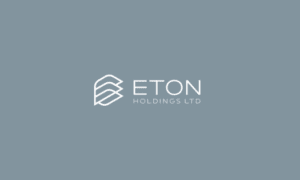The year 2026 stands as an important point for fintech founders. Growth rates that once shot upward are now cooling, and investors focus far more on long-term stability than raw speed. Reports from McKinsey, TechMagic, and others stress this shift again and again.
KPMG’s funding data for the first half of 2025 also shows a mix of caution and opportunity. Investors continue to fund fintech, but they do so with tighter checks, stronger due-diligence, and more pressure on founders to show a working model early.
This article is for new founders who plan to enter fintech or build a business that sits next to it. You will see the main trends, what each trend means for your idea, and how you can use them in your planning.
The Fintech Setting in 2026: What Founders Must Understand
From rapid expansion to steady value
For almost a decade, fintech companies focused on fast growth. The priority was scale, not profit. McKinsey’s recent view highlights a shift: investors now expect strong unit economics, lower burn rates, and disciplined plans.
This means:
- You must know your numbers early.
- You must expect some margin pressure.
- You must prepare for higher regulatory duties.
- Growth curves may be flatter, but more stable.
A fintech built in 2026 needs both ambition and caution — not only speed.
Forces shaping fintech in 2026
A mix of economic, regulatory, consumer, and technology factors influence founders this year.
Economic factors
Interest rates stay higher than before. Inflation has eased but still shapes consumer spending. Investors now prefer responsible business plans instead of risky expansion.
Regulatory factors
As noted by Wolters Kluwer, rules around data, AI, banking, and stablecoins are tightening. Governments want more clarity, more reporting, and safer products.
Consumer factors
People now expect simple interfaces, personalisation, and quick service — regardless of whether they use a bank app or a retail app with embedded finance.
Technology factors
AI, machine learning, blockchain, and even early quantum research (as noted by N-iX) move forward at a rapid pace. These tools shape new business models, security systems, and financial products.
Why this matters for YOUR startup
A founder cannot depend on only tech trends. Your idea must fit:
- Market fit
- Regulatory fit
- Tech readiness
- Partner support
If even one of these items is weak, the entire model may collapse. Your job is to align all four.
Quick checklist:
- Is there a real need for your product?
- Is it allowed under existing rules?
- Do you have the tech to support it?
- Which partners will help you?
Top Fintech Trends for New Founders in 2026
Below are the ten most important trends shaping 2026. Each section includes a simple description, why it matters, questions to ask, and actions to take.
Trend 1: Embedded Finance & Banking-as-a-Service (BaaS)
Apps outside the finance sector now include payments, lending, insurance, or other financial tools. Or fintech companies provide ready-made banking systems to other companies.
This trend is highlighted by TheRecursive.
You do not need to build a full bank. You can attach ready-made financial features to your app. This reduces entry barriers and opens new revenue streams.
Key questions:
- Does your product need payments, credit, or insurance built in?
- Which partner banks or API providers should you use?
- Will you require any licence in your region?
Action checklist:
- Shortlist BaaS providers.
- Plan use cases such as payments, small loans, or protection plans.
- Review revenue share and risk distribution.
Trend 2: Artificial Intelligence, Personalisation & Generative Systems
AI and machine learning support chatbots, fraud detection, personalised advice, and other financial processes. Generative systems also support content, customer support, and user flows. IE University covers this in detail.
Customers expect personal attention. AI helps reduce manual work, improves accuracy, and supports better decisions. Regulators now check AI transparency and fairness.
Key questions:
- Do you have enough data to use AI?
- Are you prepared for AI governance duties?
- Can you explain how your AI works to regulators?
Action checklist:
- Create a strong data plan.
- Choose AI tools that support your needs.
- Keep humans in the loop for checks and fairness.
Trend 3: Open Banking & API-Driven Models
Secure APIs share financial data between banks and third-party apps. TheRecursive notes that this allows innovation at a faster rate.
Your app can pull bank data (with user consent) to provide better services. It also supports new products such as spending insights, cross-bank dashboards, and customised plans.
Key questions:
- Will you use external financial data?
- How will you protect user information?
- What type of API system do you need?
Action checklist:
- Study your country’s rules on open banking.
- Form partnerships with API providers.
- Build an API-first structure from day one.
Trend 4: Sustainable Finance & ESG-Driven Products
Products that include climate impact, social support, or responsible governance. This includes carbon tracking, green lending, or social funding platforms.
Covered by StartUs Insights. Investors and regulators now value sustainability. Consumers support companies that care about their impact.
Key questions:
- Can your product support any ESG target?
- How will you show your impact with real numbers?
Action checklist:
- Study ESG rules in your region.
- Plan features that match your ESG goals.
- Create reporting tools to show impact.
Trend 5: DeFi, Stablecoins & Blockchain Infrastructure
Blockchain supports financial tools outside traditional banks. It also includes tokenization, stablecoins, and smart contracts. IE University covers these changes.
There is room for new ideas here, but the risks are high. Rules around blockchain differ widely.
Key questions:
- Does your idea truly need blockchain?
- How will you manage KYC, AML, and security?
- Are you ready for regulator checks?
Action checklist:
- Decide whether tokenization adds value.
- Study your region’s sandbox programs.
- Build strict security and audit systems.
Trend 6: RegTech & Compliance Automation
Tools that automate checks, verification, risk scoring, and documentation. Wolters Kluwer notes rapid growth in this area.
Fintech has heavy regulatory duties. Automation reduces cost, time, and human error.
Key questions:
- Which licences do you need?
- Can you automate KYC and AML checks?
- How will you audit your systems?
Action checklist:
- Map all rules in your market.
- Add RegTech tools early.
- Build internal monitoring from day one.
Trend 7: Cybersecurity, Digital Identity & Trust Systems
Security tools that protect data, confirm identity, and stop fraud. N-iX highlights that trust systems are now central.
A single breach can destroy a fintech business. Trust is the biggest strength you can build.
Key questions:
- How will you confirm user identity?
- How will you protect data?
- What is your incident-response plan?
Action checklist:
- Use zero-trust structures.
- Add biometrics or decentralised identity tools.
- Build a team or system for monitoring alerts.
Trend 8: Financial Inclusion & New Credit Models
Models that use alternative data, mobile channels, and digital methods to support people who do not have formal bank access. Infomineo covers this trend.
Regions in South Asia, Africa, and SE Asia have huge demand. Many customers are unbanked but digitally active.
Key questions:
- Can your idea support people missed by banks?
- What alternative data can you use?
- Who are your distribution partners?
Action checklist:
- Map underserved groups in your area.
- Study local credit behaviour.
- Build low-cost access channels (mobile-first).
Trend 9: Business Model Innovation (BNPL, Subscription Finance, Embedded Insurance)
New ways to offer credit or protection through apps and online stores. Appinventiv covers these shifts.
You can offer credit or insurance inside checkouts or service flows. You do not need to build a full bank for this.
Key questions:
- Which part of the value chain do you own?
- How will you manage risk?
- Who will be your partner bank or insurer?
Action checklist:
- Pick a clear model (BNPL, subscription finance, or insurance).
- Build risk models.
- Integrate with payment and commerce flows.
Trend 10: Next-Gen Digital Banking & Neobanks
Banks that operate fully online, or platforms that support multi-service financial access. Forbes describes this trend.
There is still room for niche banks for freelancers, SMEs, creators, and global workers.
Key questions:
- Which niche will you serve?
- Do you need a full banking licence?
- Will you build or partner?
Action checklist:
- Define your segment.
- Prepare your licence plan.
- Build an MVP based on customer needs.
Common Mistakes New Fintech Founders Make
Mistake 1: No regulatory plan
Fix: Create a detailed regulatory map for your product.
Mistake 2: Weak fraud controls
Fix: Add security checks, monitoring, and verification tools.
Mistake 3: Chasing hype
Fix: Use technology only when it fits your model.
Mistake 4: Underestimating trust
Fix: Design a simple, honest, and transparent product.
Mistake 5: Weak data plan
Fix: Keep data clean, structured, and ready for analysis.
Future Outlook: What Comes After 2026
Reports from N-iX and other sources suggest several future directions:
- AI checks may become mandatory
- Embedded finance may become standard
- Quantum research may influence encryption
- Global rules may tighten
- Stablecoins may get clearer support or stricter control
The winners will be founders who plan for long-term stability, not short-term hype.
Conclusion
2026 brings both caution and opportunity. You now know the top ten fintech trends, why they matter, and how they shape your planning. Choose the trends that fit your idea, build a firm base, form strong partnerships, and keep your users safe and informed.
A strong foundation today increases your chance of success tomorrow.
FAQ
What are the biggest fintech trends for 2026?
Embedded Finance, AI, Open Banking, ESG finance, DeFi, RegTech, cybersecurity, financial inclusion, new credit models, and digital banking.
How can a new founder use embedded finance?
By adding payments, credit, or insurance directly inside their product using BaaS providers.
What regulatory issues must fintech startups in Pakistan consider?
Licensing from SBP, KYC/AML rules, security standards, cross-border payment limits, and reporting duties.
How important is AI for fintech today?
AI supports fraud detection, personalisation, customer support, and internal operations. It is now expected in modern financial tools.
What does sustainable finance mean for a fintech model?
It means adding features or products that support climate, social, or governance targets.
How do fintech founders build trust?
Strong security, clear communication, safe processes, and honest pricing.



































